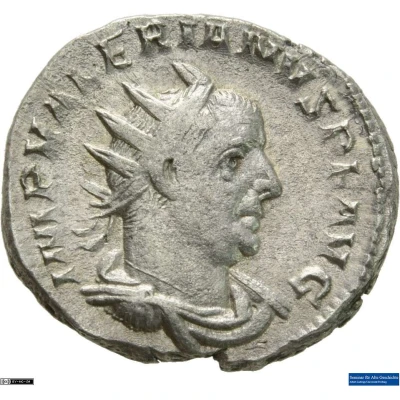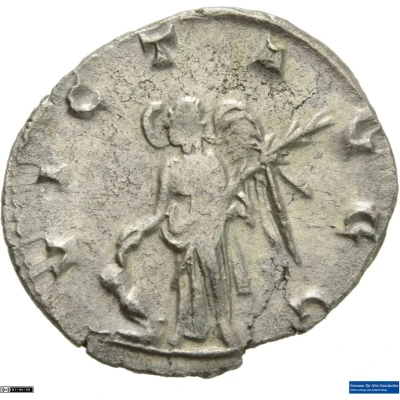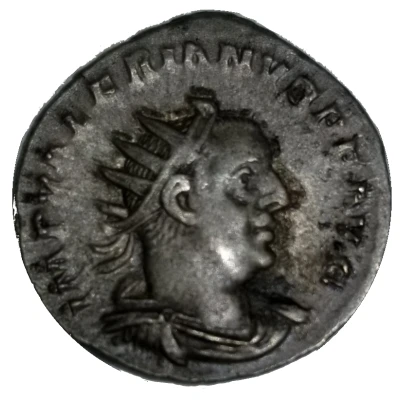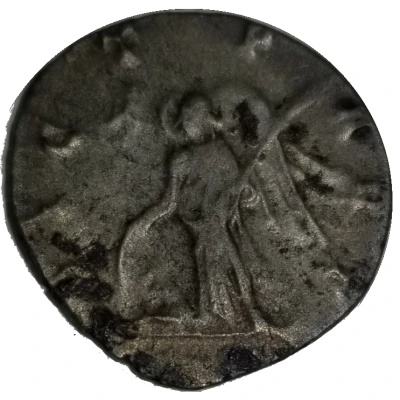Antoninianus - Valerianus VICTORIA AVGG; Victory
259 year| Silver | - | - |
| Issuer | Rome › Roman Empire (27 BC - 395 AD) |
|---|---|
| Emperor | Valerian (Publius Licinius Valerianus) (253-260) Gallienus (Publius Licinius Egnatius Gallienus) (253-268) |
| Type | Standard circulation coin |
| Year | 259 |
| Value | Antoninianus (1) |
| Currency | Antoninianus, Reform of Caracalla (AD 215 – 301) |
| Composition | Silver |
| Shape | Round (irregular) |
| Technique | Hammered |
| Demonetized | Yes |
| Updated | 2024-10-05 |
| Numista | N#286175 |
|---|---|
| Rarity index | 97% |
Reverse
Victory, winged, draped, standing left, resting on shield and holding palm in left hand.
Script: Latin
Lettering: VICTORIA AVGG
Translation:
Victoria Duorum Augustorum.
Victory of the two emperors (Augusti).
Comment
Source:Online Coins of the Roman Empire (OCRE)
Interesting fact
The Antoninianus coin was introduced during the reign of Emperor Antoninus Pius (138-161 AD) as a replacement for the denarius, which had been the standard Roman silver coin for centuries. The Antoninianus was made of silver, but it was smaller and lighter than the denarius, with a lower silver content. Despite its lower value, the Antoninianus was still widely accepted and used throughout the Roman Empire, and it remained in circulation for over a century. One interesting fact about the Antoninianus is that it features an image of the Roman goddess Victory (Victoria) on its reverse side. This image was meant to symbolize the Roman Empire's military victories and its dominance over other nations. The inscription "VICTORIA AVGG" (Victory of the Emperors) on the coin's reverse side further emphasizes this message. Overall, the Antoninianus coin is an important piece of Roman history and a testament to the empire's economic and military power during the 2nd century AD.



